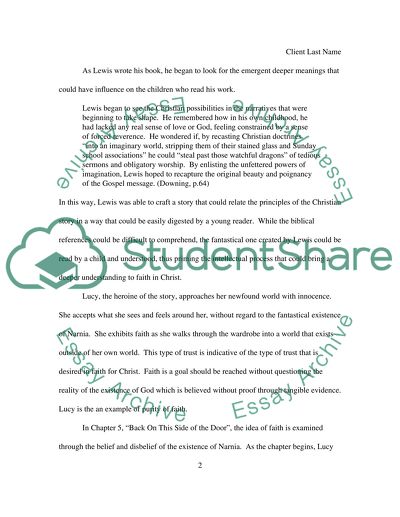Cite this document
(“A critical review of The Lion, the Witch, and the Wardrobe by C.S Essay”, n.d.)
A critical review of The Lion, the Witch, and the Wardrobe by C.S Essay. Retrieved from https://studentshare.org/miscellaneous/1550012-a-critical-review-of-the-lion-the-witch-and-the-wardrobe-by-cs-lewis
A critical review of The Lion, the Witch, and the Wardrobe by C.S Essay. Retrieved from https://studentshare.org/miscellaneous/1550012-a-critical-review-of-the-lion-the-witch-and-the-wardrobe-by-cs-lewis
(A Critical Review of The Lion, the Witch, and the Wardrobe by C.S Essay)
A Critical Review of The Lion, the Witch, and the Wardrobe by C.S Essay. https://studentshare.org/miscellaneous/1550012-a-critical-review-of-the-lion-the-witch-and-the-wardrobe-by-cs-lewis.
A Critical Review of The Lion, the Witch, and the Wardrobe by C.S Essay. https://studentshare.org/miscellaneous/1550012-a-critical-review-of-the-lion-the-witch-and-the-wardrobe-by-cs-lewis.
“A Critical Review of The Lion, the Witch, and the Wardrobe by C.S Essay”, n.d. https://studentshare.org/miscellaneous/1550012-a-critical-review-of-the-lion-the-witch-and-the-wardrobe-by-cs-lewis.


